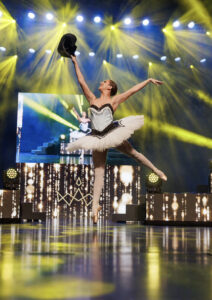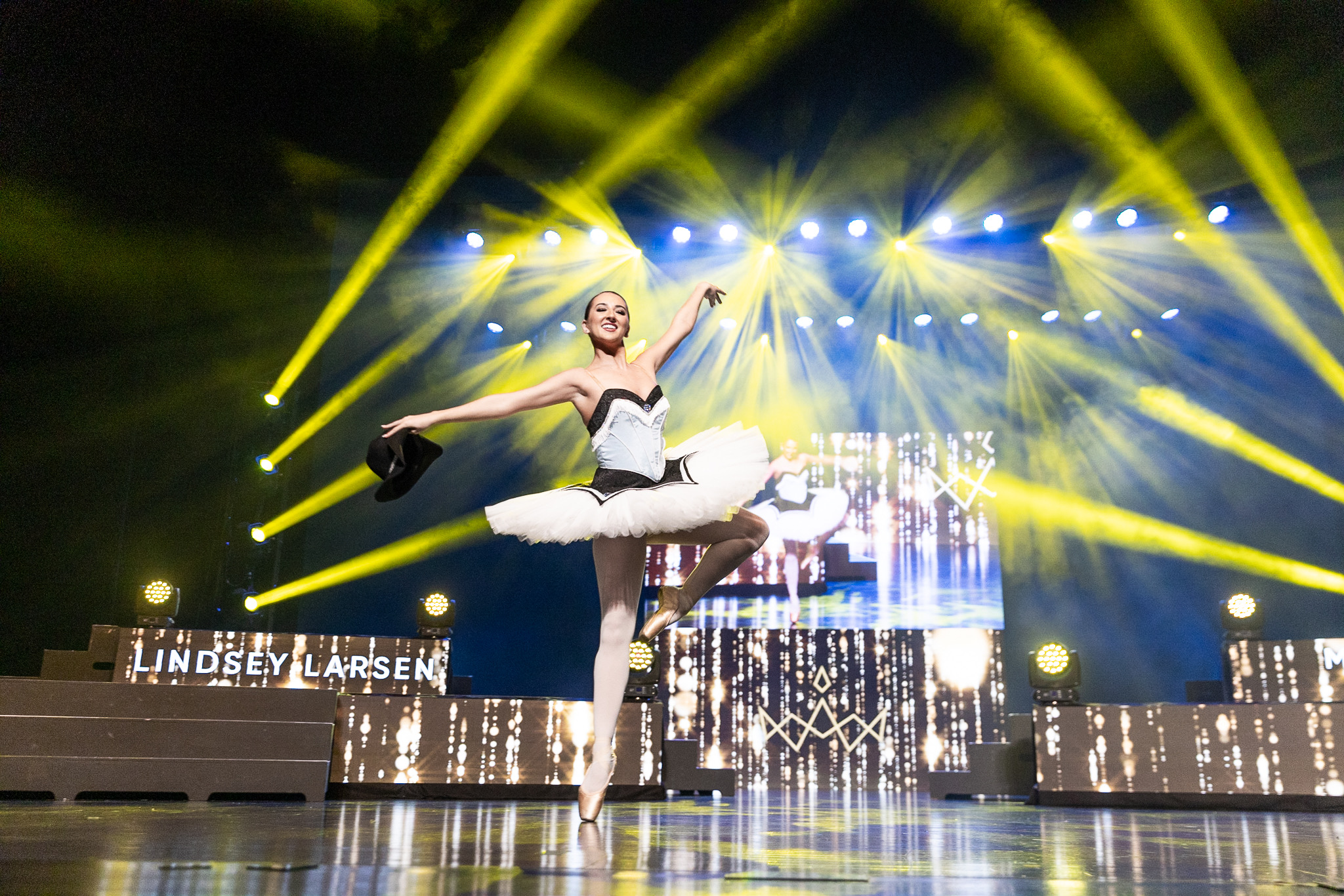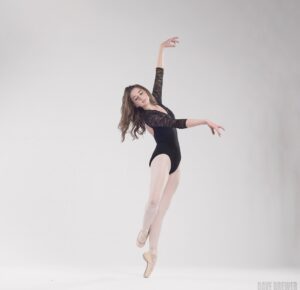September 17th was National Dance Day. As I celebrated with my fellow dancers, it had me reflecting on my dance journey. I am so extremely grateful for dance and all the opportunities it has provided. Having recently given a speech on my mental health journey with dance, I thought it would be fitting to share it with you here.
During my year as Miss Utah, I really want to shed light on topics that are less talked about in hopes of breaking down barriers and stigmas that may surround them. It also helps people understand that they are not alone. Oftentimes, the problems we are facing, others are struggling with as well. Let’s build a safe community where we can encourage, care for, and support each other in difficult times. Trigger warning: topics such as body dysmorphia will be discussed.
Community
Dance is such a powerful art form. It has the power to unify and bring people together in ways other things can’t. I have seen cultures from all over the world use dance as a way to celebrate or communicate. One of the most admirable qualities of dance is how it has the power to share stories and messages. Dance has always been an outlet for me to share my emotions and feelings with others. Whether I am dancing Odette in “Swan Lake,” or just doing improv in my room, it allows me to communicate in a way that words cannot.
Dance has given me a support system. I remember spending much of my early years at the dance studio for hours on end taking classes and rehearsing. My studio was my second home with my classmates becoming like siblings because I saw them more than my own family at times. Having friends and mentors that are just as passionate about something you are, creates a loving, encouraging environment. I made life-long friends and connections that have impacted me for years. I could spend all day talking about why I love to dance, but I want to address some of the more complex topics that have occurred because of dance.
 Perfectionism
Perfectionism
The obsession with being perfect has affected me in many ways. I remember coming home from certain classes either in tears or so upset with myself in hopes that it would make me do better the next time. I would let perfection determine if I had a “good class” or a “bad class” depending on how close to “perfect” I was. Dancers continue to chase (or chassè if you’re a dancer lol) this unrealistic ideal.
What makes a perfectionist? According to a researcher from The Swedish School of Sport and Health Sciences, Sanna Nordine-Bates, “perfectionism is striving to reach for high goals and working very hard to meet them. Perfectionistic concerns are harsh critiques at oneself. While some might argue that perfectionistic strivings are healthy and good if wanting to achieve any goal, even these ideals can be problematic because some individuals can become too rigid in their goals.” Is dance the cause of high rates of perfectionism? In today’s world where events, achievements, and adventures are on display, perfectionism is something we all deal with, especially on social media.
When I was in high school, I remember trying to make my Instagram look so aesthetically pleasing that it didn’t become enjoyable anymore. It felt like a challenge of who could come up with the most Pinterest-worthy post. Posts, likes, and comments can contribute to feelings of perfectionism, anxiety, and maybe even body image issues. A big factor of these feelings is the fear of missing out. It is really hard for a lot of us to take a step back and realize that social media isn’t always real or perfect. Whether you are struggling with perfectionism in dance or in your life in general, you are not alone! How can we combat this? Avoid comparison. Put on your imaginary horse blinders and focus on what you have to give. As Theodore Roosevelt said, “Comparison is the thief of joy.” Don’t be afraid to be vulnerable, authentic, and REAL!
Body Dysmorphia
When I was around 14 years old, I remember going to a summer intensive that was very prestigious. The feeling of getting to dance at a top ballet school, with exceptional instructors made me so excited. The biggest thing I remember from my time there was how insecure I felt with my body. I have never had that “ballerina body” even though I was extremely healthy and fit, I never felt like the professionals I saw on stage. I never felt tall enough. I never felt skinny enough. My waist wasn’t small enough.
Along with these feelings came an insecurity with a sweating condition I have. I sweat more than anyone in the class and especially on the palms of my hands. The partnering class was my worst nightmare because it meant having to hold hands and dance with a boy. I remember my first partnering class where I apologized for my sweaty hands over ten times. Body dysmorphia is defined as “an obsessive focus on a perceived flaw in one’s appearance,” most commonly on one’s shape, size, or weight. Most people with body dysmorphia perceive their bodies to look a different way than they actually do. Dancers are very driven and determined individuals, which often leads to taking great risks to improve or to be better dancers. Body dysmorphia is a disorder that I have struggled with since junior high and continue to deal with.
As dancers and even as a society, we might think there is an ideal weight, height, and shape. There is NO “ideal body.” Comparison and expectation to reach an unattainable ideal can be incredibly harmful, especially in your younger years when you are starting to build a relationship with your body. I believe it is so important to have open and honest conversations about mental health and body image with dancers so we can have good relationships with ourselves.
Both the body positivity and the body neutrality movements have been a beacon of hope for me as I’ve dealt with this disorder. The body-neutral approach is that your value isn’t attached to your body and your happiness doesn’t depend on what you look like. Body positivity is believing you are beautiful no matter what. If you too are struggling with this, once again, you are not alone.
The most important lessons I have learned from body dysmorphia are:

- Your body is beautiful no matter what it looks like.
- Be grateful for what your body can do. It is a blessing to get to wake up every day and do something that you love.
- Use your insecurities or flaws as your superpower.
- The most successful dancers are the ones who can accept their flaws and mistakes, and learn to grow from them as an artist and a person. “I may be the sweatiest dancer in class but I sure look like I am working the hardest.”
Kathryn Morgan, one of my dance role models and former professional dancer with New York City Ballet said, “No company contract, or title, etc, is worth your mental or physical health.” It is widely important to value your health. It can have a profound impact on all areas of your life. If you’re finding it difficult to address your mental health concerns, reach out to someone you know and trust, or seek help from a licensed professional. Remember that you are never alone.



Love this, very inspirational to young women everywhere. I appreciate you and your vulnerability!
I agree with so much of what you said. Thankyou for putting it down in black and white to help normalize it’s and help us all learn from it.